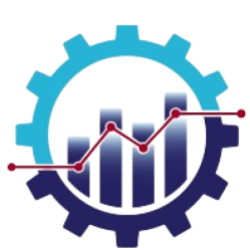Mobile Device Management (MDM) software is a crucial tool for organizations to manage, monitor, and secure mobile devices such as smartphones, tablets, and laptops. MDM solutions help ensure that mobile devices used in an enterprise environment comply with company policies and are secure from threats. Here are the key features, benefits, and examples of MDM software:
Key Features of MDM Software
- Device Enrollment and Provisioning
- Automatic Enrollment: Simplifies the process of enrolling new devices into the MDM system.
- Bulk Enrollment: Allows multiple devices to be enrolled simultaneously.
- Configuration Profiles: Set up devices with specific settings, restrictions, and applications automatically.
- Policy Management
- Security Policies: Enforce security measures such as password requirements, encryption, and screen lock settings.
- Compliance Policies: Ensure devices comply with industry regulations and company policies.
- Geofencing: Apply policies based on the geographic location of the device.
- Application Management
- App Deployment: Push applications to devices remotely.
- App Whitelisting/Blacklisting: Control which apps can be installed on devices.
- App Configuration and Updates: Manage app settings and ensure they are up to date.
- Security and Compliance
- Device Lockdown: Remotely lock devices that are lost or stolen.
- Data Wipe: Erase data from devices remotely to protect sensitive information.
- Encryption Enforcement: Ensure that data on devices is encrypted.
- Monitoring and Reporting
- Device Inventory: Keep track of all devices enrolled in the system.
- Usage Reports: Monitor device usage and generate reports on compliance, app usage, and security incidents.
- Real-Time Alerts: Receive notifications about security breaches, compliance issues, or unauthorized access attempts.
- Remote Management
- Remote Control: Access and troubleshoot devices remotely.
- Location Tracking: Track the physical location of devices.
- Remote Configuration: Update settings and policies without physical access to the device.
- Content Management
- Secure Content Distribution: Distribute documents, files, and other content securely.
- Content Access Control: Restrict access to sensitive content based on user roles and permissions.
Benefits of MDM Software
- Enhanced Security: Protects sensitive corporate data by enforcing security policies and enabling remote actions like data wipe and device lockdown.
- Improved Compliance: Helps organizations comply with industry regulations and internal policies by ensuring all devices meet required standards.
- Increased Productivity: Simplifies the management of mobile devices, allowing IT staff to focus on other critical tasks.
- Cost Efficiency: Reduces the risk of data breaches and the associated costs, and minimizes downtime through effective device management.
- Better Device Visibility: Provides a comprehensive view of all mobile devices in the organization, making it easier to manage and monitor them.
Examples of MDM Software
- Microsoft Intune
- Part of Microsoft’s Enterprise Mobility + Security (EMS) suite, it provides comprehensive device management and security for Windows, iOS, Android, and macOS devices.
- Features include app management, device compliance policies, and integration with other Microsoft services.
- VMware Workspace ONE (formerly AirWatch)
- Offers a unified endpoint management (UEM) solution that supports multiple operating systems and device types.
- Includes features for application management, endpoint security, and remote access.
- MobileIron
- Focuses on mobile security and management, offering robust solutions for device and app management.
- Provides advanced security features such as zero-trust security, identity and access management, and threat detection.
- Cisco Meraki Systems Manager
- Provides cloud-based device management for a wide range of devices, including laptops and IoT devices.
- Offers features such as centralized management, real-time diagnostics, and automatic policy enforcement.
- IBM MaaS360
- A comprehensive MDM solution that includes AI-driven insights and analytics to enhance device management.
- Features include app management, secure mobile email, and content management.
Conclusion
MDM software is essential for organizations to manage their mobile device fleets effectively. By implementing MDM solutions, companies can enhance security, ensure compliance, increase productivity, and reduce operational costs. Choosing the right MDM solution depends on the specific needs and requirements of the organization, including the types of devices used, security requirements, and integration with existing IT infrastructure.
